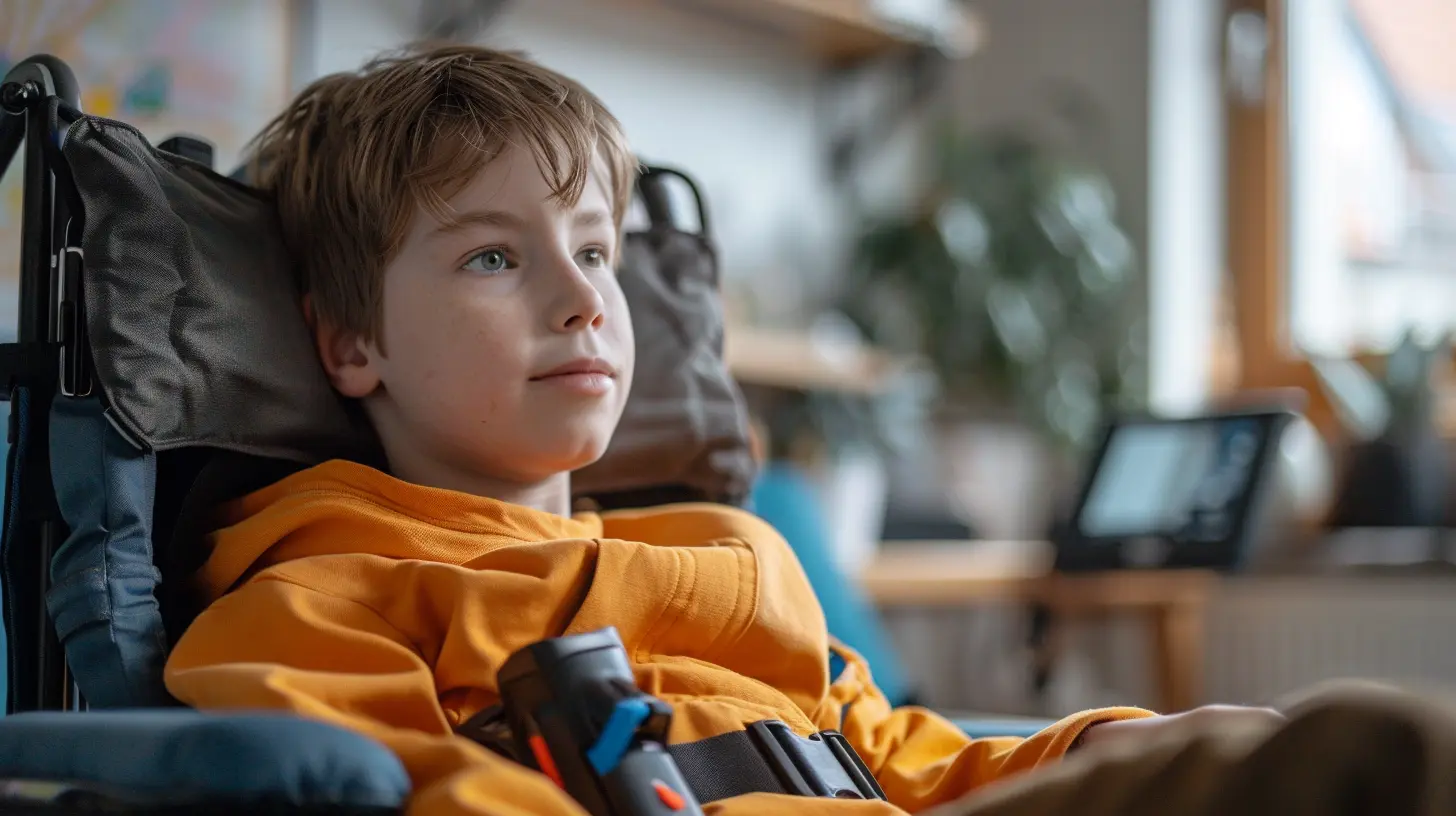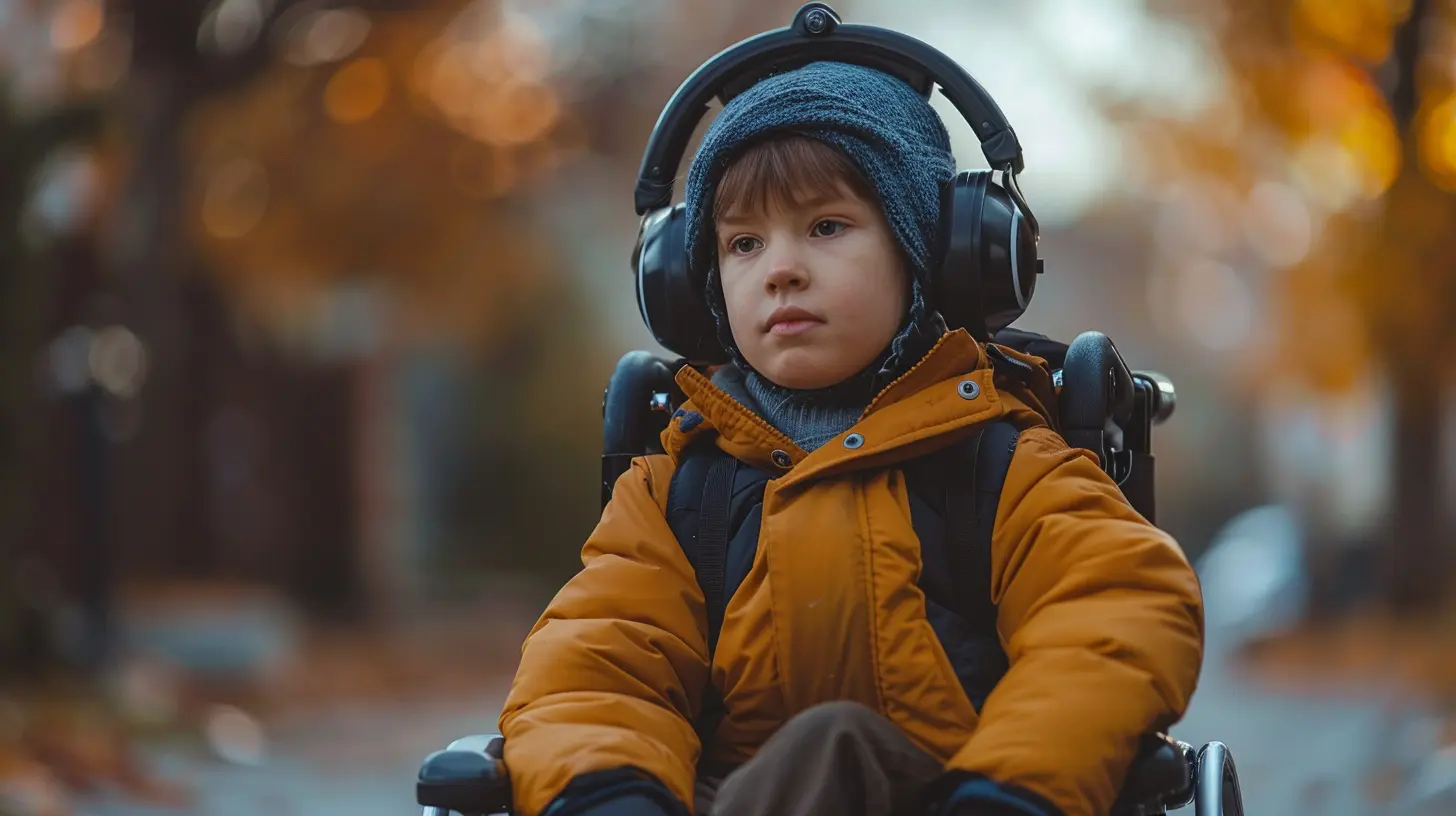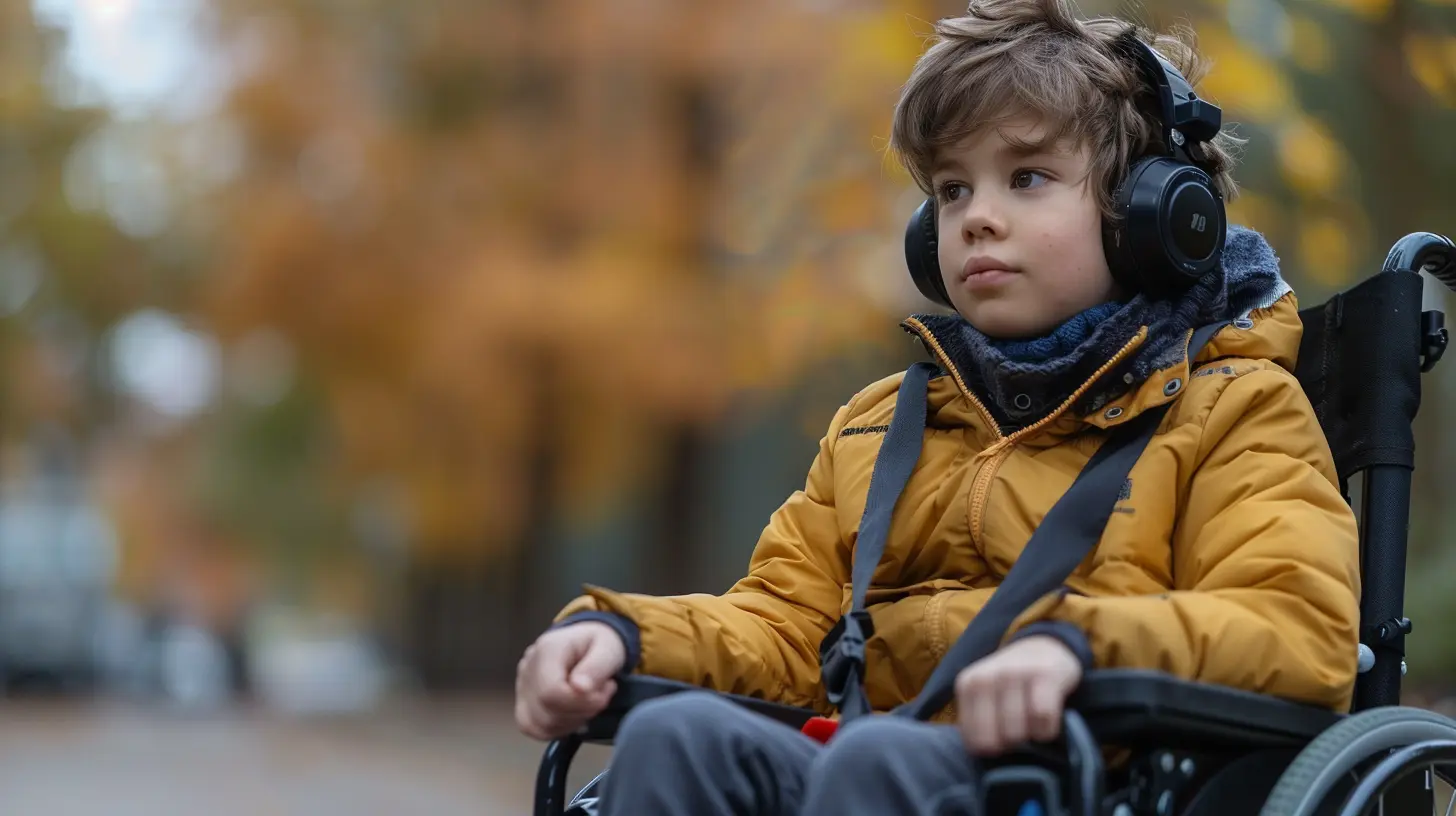Navigating the World of Assistive Technology for Children
28 September 2025
Parenting is already a rollercoaster, but when you throw in the added challenge of finding the right assistive technology for your child, it can feel like you’re lost in a high-tech jungle. With so many tools, gadgets, and software options out there, where do you even begin? Don't worry—I’ve got your back.
In this guide, we’ll break down everything you need to know about assistive technology (AT) for kids, from what it is to how to choose the right tools for your child’s unique needs. 
What Is Assistive Technology?
Let’s get one thing straight—assistive technology isn’t just about fancy gadgets. It’s about giving your child the tools they need to thrive. AT can be any device, software, or system that helps children with disabilities overcome challenges in communication, mobility, learning, or daily activities.This can range from low-tech solutions like pencil grips and visual schedules to high-tech devices like speech-generating apps and adaptive keyboards. The goal? To empower your child and help them be as independent as possible. 
Why Assistive Technology Is a Game-Changer
Imagine trying to run a marathon in flip-flops—frustrating, right? That’s what life can feel like for a child with disabilities when they don’t have access to the right tools. Assistive technology levels the playing field, helping kids communicate better, learn more effectively, and gain independence.Here’s how AT can make a real difference:
- Boosts Confidence – When kids can express themselves or complete tasks independently, their self-esteem skyrockets.
- Enhances Learning – Tools like audiobooks, text-to-speech software, and interactive learning apps make education more accessible.
- Improves Communication – Nonverbal children can benefit from speech-generating apps or picture-based communication boards.
- Supports Mobility – Wheelchairs, adaptive seating, and walkers help kids move freely in their environment. 
Different Types of Assistive Technology for Children
Not all assistive technology is created equal. What works for one child may not be the best fit for another. Let’s break it down into key categories so you can navigate the options like a pro.1. Communication Devices and Tools
For kids who struggle with speech, Augmentative and Alternative Communication (AAC) devices are lifesavers. These tools help children express their thoughts, needs, and feelings without frustration.Some popular options include:
- PECS (Picture Exchange Communication System) – A simple, low-tech way to communicate using picture cards.
- Speech-Generating Devices (SGDs) – High-tech options like iPads with apps (e.g., Proloquo2Go) that speak for the child.
👉 Pro Tip: Start small! Trying out a simple picture board before jumping into apps can make the transition smoother.
2. Learning and Cognitive Aids
If your child struggles with reading, writing, or focus, there are plenty of assistive tools that can help.- Text-to-Speech Software – Programs like NaturalReader and Kurzweil help kids with dyslexia by reading text aloud.
- Screen Readers – Built-in tools like VoiceOver (Apple) or NVDA (Windows) help visually impaired children navigate screens.
- Graphic Organizers – Apps like Inspiration Maps help kids structure their thoughts before writing.
👉 Think of these as training wheels for learning—just enough support to get them going without holding them back.
3. Mobility Aids
For children with physical disabilities, mobility aids provide freedom and independence.- Wheelchairs & Walkers – Whether manual or powered, the right mobility aid can make all the difference.
- Adaptive Seating – Helps kids maintain proper posture and comfort in school or at home.
- Prosthetics & Orthotics – Modern technology has made these highly customizable and effective.
👉 The right mobility aid can be the difference between frustration and freedom. Choose wisely!
4. Daily Living Aids
Everyday activities, from brushing teeth to eating lunch, can be challenging for some kids—but AT can help.- Adaptive Utensils – Weighted or easy-to-grip utensils help kids eat independently.
- Sensory-Friendly Clothing – Tagless, seamless, or compression clothing helps kids with sensory sensitivities.
- Smart Home Devices – Voice-controlled assistants like Alexa can help kids turn lights on/off or set reminders.
👉 The goal? Empower them to do things on their own, one small step at a time. 
Choosing the Right Assistive Technology for Your Child
There’s no one-size-fits-all solution when it comes to AT. The wrong tool can feel more like a burden than a benefit. So, how do you pick the right one?Step 1: Identify the Struggle Areas
Does your child need help with communication? Learning? Mobility? Pinpoint the biggest challenge first.Step 2: Start Simple
High-tech isn’t always better. Sometimes, a low-tech solution (like a visual schedule) can be just as effective.Step 3: Get Professional Input
Your child’s therapist, teacher, or doctor can give valuable insights on what might work best.Step 4: Test Before You Buy
Many assistive tech tools are expensive—so try before you commit! Some schools and therapy centers offer trials.Step 5: Be Patient & Flexible
It takes time to adjust to new tools. If something’s not working, don’t be afraid to switch gears and try something else.Common Myths About Assistive Technology
Let’s bust some myths right now:❌ "AT will make my child dependent on technology."
Reality: AT enhances independence, not dependency. Giving a child a communication device doesn’t mean they’ll never speak—it actually encourages language development.❌ "These tools replace the need for therapy or special education."
Reality: AT is a support tool, not a magic fix. It works best alongside therapy and personalized learning plans.❌ "It’s too expensive—we can’t afford it."
Reality: While some AT tools are pricey, there are funding options, grants, and even free apps that can help. Schools may also provide AT under an IEP (Individualized Education Program).Resources for Getting Assistive Technology
If cost is a concern (and let’s be real, it usually is), here are some places to look for funding or free trials:- Assistive Technology Loan Programs – Many states offer lending libraries to try out tech before purchasing.
- Medicaid & Insurance – Some assistive devices may be covered, especially mobility aids and AAC devices.
- Nonprofits & Grants – Organizations like United Cerebral Palsy and Easterseals offer financial assistance.
- School & IEP Services – If your child qualifies for special education, their school may provide AT at no cost.
👉 Never assume you have to pay out of pocket—there’s help out there!
Final Thoughts
Navigating the world of assistive technology for children can feel overwhelming, but remember—you are your child’s best advocate. The right tools can open up a world of possibilities, helping your child communicate, learn, and gain independence.Take it one step at a time, be patient, and don’t be afraid to experiment. With the right approach, assistive technology can become a powerful ally in your child’s journey.
Got any favorite assistive tech tools that have worked wonders for your child? Drop them in the comments—I’d love to hear what’s making a difference for families like yours!
all images in this post were generated using AI tools
Category:
Special NeedsAuthor:

Noah Sawyer
Discussion
rate this article
1 comments
Joel Barron
What a fantastic read! Navigating assistive technology can feel overwhelming, but your insights make it so much easier. It’s wonderful to see how these tools can empower our kids. Thanks for sharing such valuable information for parents like us!
October 1, 2025 at 4:03 AM

Noah Sawyer
Thank you so much for your kind words! I’m glad you found the insights helpful—empowering our kids is what it's all about!


